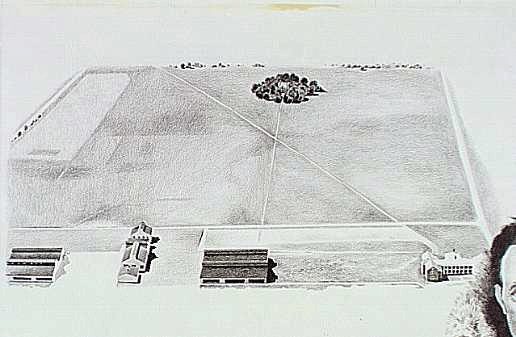|
In January 1920, the Air Service Coast Defense Field at New Dorp was named Miller Field for Captain James E. Miller. Miller was the first American aviator killed in action serving for the U.S. in World War I. Before its military days, Miller Field was home to one of the most prominent American families of the 19th century. In 1836, Cornelius "Commodore" Vanderbilt began purchasing farmland in New Dorp and owned most of what became Miller Field by 1843. The farmland was inheritted by son William. He transferred this property to his son, George Washington Vanderbilt in 1885. By 1906, he moved the 24 room "White House" to the center of the farm. George Washington Vanderbilt's claim to fame is for building Biltmore in North Carolina. Biltmore is still today, the largest home in America. The "White House" was a periodic home to him until his death in 1914. Vanderbilt's heirs sold the property to the federal government in 1919. Miller Field was completed in 1921. It had a concrete seaplane ramp, two grass runways, two landplane hangers, two seaplane hangers, troop and family housing, and three 85 foot radio masts. With the end of World War I there was less of a need for an Air Station. While remaining an active air field, Miller Field became a sub-post of Fort Wadsworth. The New York National Guard's 102nd Observation Squadron was the major air unit at the Field from 1923 to 1940. Civilian aircraft used the runway during these years as well. Some significant flights at Miller Field occurred in the 1920s. In July 1920, the Army took commercial photographers to the skies to produce aerial photographs and film of the International Cup yacht races. The newspapers were informed and able to obtain images at the field. This demonstrated both a timely way to produce photographs and a practical use of airplanes to the public. In 1928, Admiral Byrd tested his new plane, a Ford Trimotor, the Floyd Bennett at Miller Field. This plane was used for his first trip to Antartica in December 1928. Miller Field was the only Air Coast Defense Station on the east coast of seven originally planned. Crissy Field in San Francisco served the same function on the west coast. In this mission, it helped defend New York Harbor along with the Coast Artillery Corps. During World War II, seacoast guns and observation towers were constructed in addition to other military uses. During the Cold War, Army aircrafts including helicopters called Miller Field home. Other aviation uses from the 1950s through its closing in 1969 included the Civil Air Patrol, National Guard and Army Reserve troops. In the mid 1950s, Miller Field housed the 12th Antiaircraft Artillery (AAA) Battalion as well as the 1st Army Aircraft Field Maintanence Unit. The Maintanence Unit was mostly civilian employees that serviced the Nike Missiles installations in the New York area until 1960. In the 1960s, Green Beret units used the field as a training camp. This provided both housing and a reserve training area. Miller Field was deactivated by the U.S. Army in 1969. It was the last grass runway in New York City. In 1972, it became part of the National Park Service's Gateway NRA. 
NPS/Harpers Ferry Center Commissioned Artwork. |
Last updated: February 26, 2015
